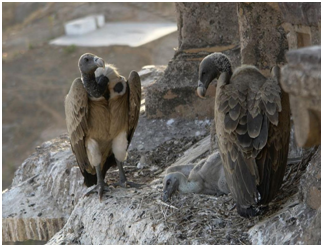

Vulture culture: How the bird was saved from extinction
Context
Vulture culture: How the bird was saved from extinction
About

- Nine species of vulture can be found living in India, but most are now in danger of extinction.
- The number declined from 40 million in the 80s to a few thousand by 2009.
- The major reason behind the vulture population getting nearly wiped out was the drug Diclofenac, found in the carcass of cattle the vultures fed on. The drug, whose veterinary use was banned in 2008, was commonly administered to cattle to treat inflammation.
- The IUCN Red Data Book has listed Gyps bengalensis as "critically endangered".
- The dramatic vulture decline observed across India presents a range of ecological threats, by influencing the numbers and distribution of other scavenging species. Increased feral dog populations have been reported all over in India, posing many associated disease risks such as rabies to humans and wildlife.
- The Hindu religion, which represents 80% of the country's population, is particularly favorable to vultures. Cows are considered sacred by majority of Hindus, so cow meat is generally not consumed. This results in the cow's corpse being left to be fed on by vultures.
|
FACT BOOK
|


